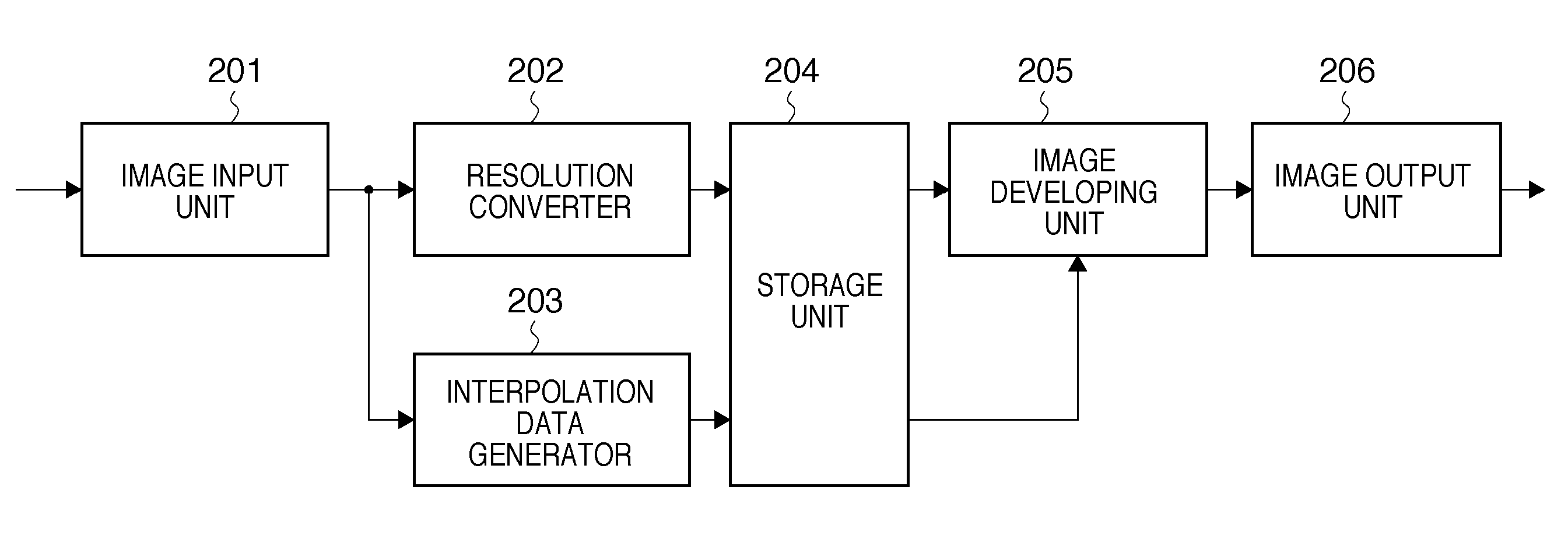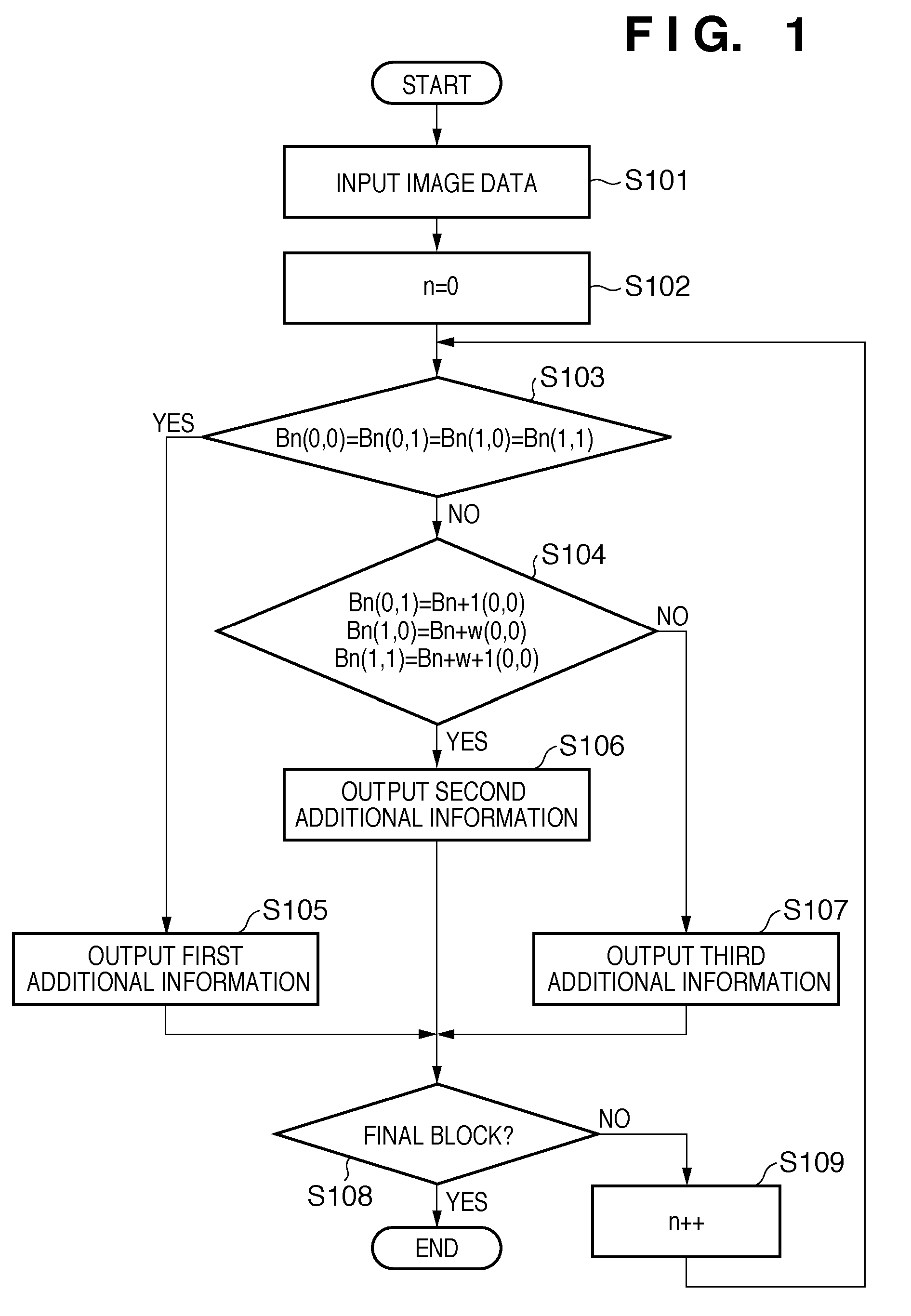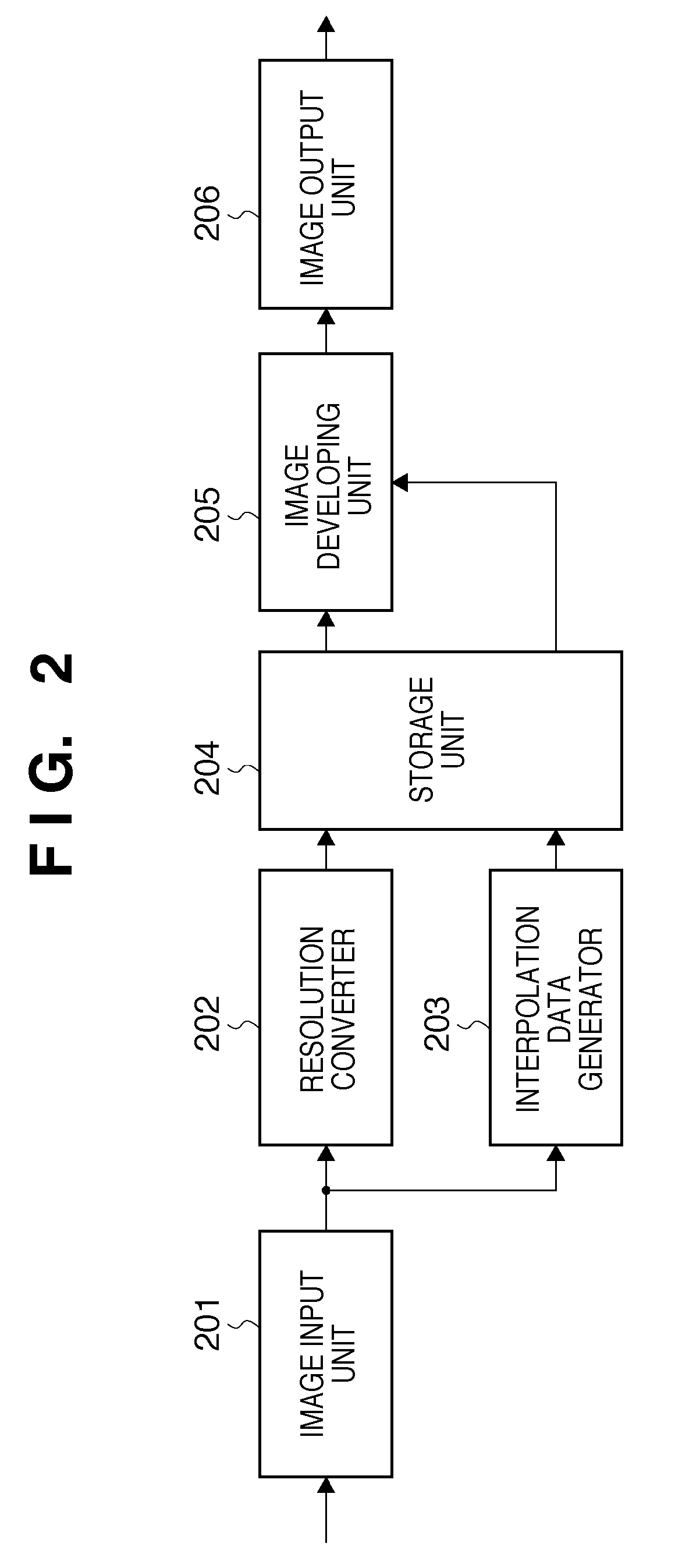Image encoding apparatus and method of controlling the same
a technology of image data and encoding apparatus, which is applied in the field of image encoding apparatus, can solve the problems of large data size of image data with a high resolution and a wide color gamut, high memory cost and long time for image processing or data transfer, and difficult data handling, so as to facilitate lossless and lossy conversion, the effect of reducing image data
- Summary
- Abstract
- Description
- Claims
- Application Information
AI Technical Summary
Benefits of technology
Problems solved by technology
Method used
Image
Examples
first embodiment
[0071][First Embodiment]
[0072]FIG. 2 is a block diagram of an image processing apparatus according to the embodiment. As is apparent from the following explanation, an example of the image processing apparatus to be described below integrates an arrangements related to image encoding and decoding. However, these arrangements may be formed as separate apparatuses.
[0073]The image processing apparatus according to this embodiment externally inputs image data to be encoded, performs resolution conversion, and generates additional information to restore the original resolution image from a reduced image. Note that the image data input source is a storage medium which stores image data as a file. However, the source may be of any other type such as an image scanner.
[0074]The encoding target image data of this embodiment is monochrome multi-valued image data containing only luminance components. The description will be made assuming that a luminance component has eight bits (256 tones from...
second embodiment
[0138][Second Embodiment]
[0139]In the first embodiment, sampling is performed in each block including 2×2 pixels, and interpolation data is generated by selectively deciding additional information. In this case, a 1-bit code word (first additional information) is assigned to three pixels at the minimum. In the second embodiment, an example will be described in which the first embodiment is further expanded to attain a higher encoding efficiency.
[0140]Note that in the second embodiment as well, encoding target image data is assumed to be monochrome multi-valued image data including eight bits per pixel (256 tones), for the descriptive convenience. However, the encoding target image data may contain a plurality of color components (e.g., RGB, YMCK, or Lab). The number of bits of one component is not limited to eight. If there are a plurality of color components, the same processing is performed for each component.
[0141]In the second embodiment, a “block” represents 2×2 pixels, as in t...
third embodiment
[0178][Third Embodiment]
[0179]In the first and second embodiments, one of first, second, and third additional information is assigned to one block (2×2 pixels), thereby generating the interpolation data of the block. In the third embodiment, an example will be described in which interpolation data is generated without limiting the number of types of additional information to three.
[0180]Note that in the third embodiment as well, encoding process target image data is assumed to be monochrome multi-valued image data. This embodiment is also applicable to RGB image data or CMYK color image data. The image is assumed to include 16 W horizontal pixels×16 H vertical pixels (the number of pixels is an integer multiple of 16 in both the horizontal and vertical directions).
[0181]FIG. 11 is a block diagram of an image encoding apparatus according to the third embodiment. The same reference numerals as in FIGS. 1 and 8 described in the first and second embodiments denote the same blocks in FIG...
PUM
 Login to View More
Login to View More Abstract
Description
Claims
Application Information
 Login to View More
Login to View More - R&D
- Intellectual Property
- Life Sciences
- Materials
- Tech Scout
- Unparalleled Data Quality
- Higher Quality Content
- 60% Fewer Hallucinations
Browse by: Latest US Patents, China's latest patents, Technical Efficacy Thesaurus, Application Domain, Technology Topic, Popular Technical Reports.
© 2025 PatSnap. All rights reserved.Legal|Privacy policy|Modern Slavery Act Transparency Statement|Sitemap|About US| Contact US: help@patsnap.com



